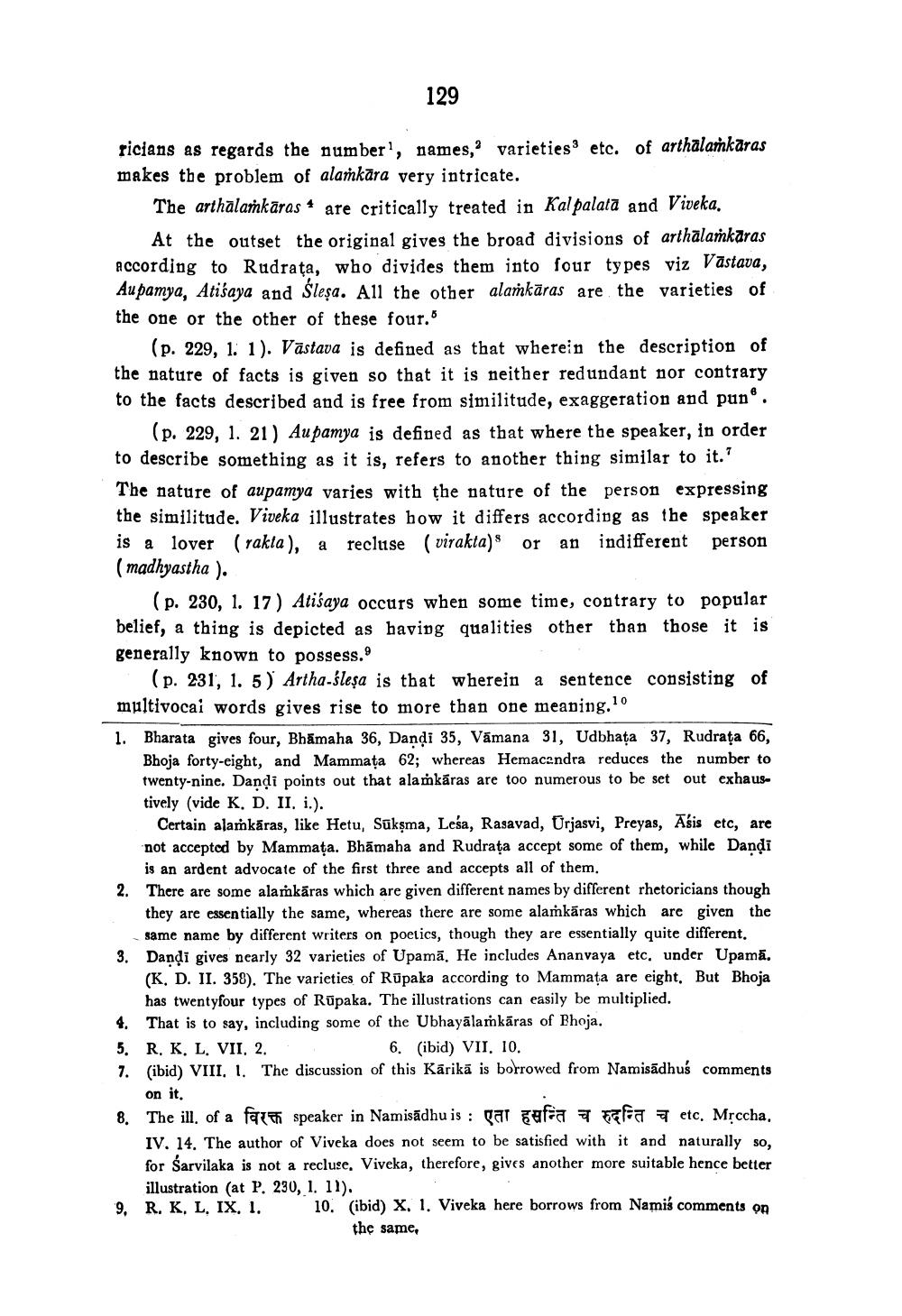________________ 129 ricians as regards the number', names, varieties etc. of arthalarnkaras makes the problem of alamkara very intricate. The arthalamkaras * are critically treated in Kal palata and Viveka. At the outset the original gives the broad divisions of arthalamkaras According to Rudrata, who divides them into four types viz Vastava, Au pamya, Atisaya and Slesa. All the other alamkaras are the varieties of the one or the other of these four. (p. 229, 1: 1). Vastava is defined as that wherein the description of the nature of facts is given so that it is neither redundant nor contrary to the facts described and is free from similitude, exaggeration and puno. (p. 229, 1. 21) Aupamya is defined as that where the speaker, in order to describe something as it is, refers to another thing similar to it.' The nature of aupamya varies with the nature of the person expressing the similitude. Viveka illustrates how it differs according as the speaker is a lover (rakla), a recluse (virakta)S or an indifferent person ( madhyastha ). (p. 230, 1. 17) Atisaya occurs when some time, contrary to popular belief, a thing is depicted as having qualities other than those it is generally known to possess. (p. 231, 1. 5) Artha-slesa is that wherein a sentence consisting of multivocai words gives rise to more than one meaning." Bharata gives four, Bhamaha 36, Dandi 35, Vamana 31, Udbhata 37, Rudrata 66, Bhoja forty-eight, and Mammata 62; whereas Hemacandra reduces the number to twenty-nine. Dandi points out that alamkaras are too numerous to be set out exhaustively (vide K. D. II, i.). Certain alamkaras, like Hetu, Suksma, Lesa, Rasavad, Urjasvi, Preyas, Asis etc, are not accepted by Mammata. Bhamaha and Rudrata accept some of them, while Dandi is an ardent advocate of the first three and accepts all of them. 2. There are some alamkaras which are given different names by different rhetoricians though they are essentially the same, whereas there are some alamkaras which are given the same name by different writers on poetics, though they are essentially quite different. 3. Dandi gives nearly 32 varieties of Upama. He includes Ananvaya etc. under Upama. (K. D. II. 358). The varieties of Rupaka according to Mammata are eight. But Bhoja has twentyfour types of Rupaka. The illustrations can easily be multiplied. 4. That is to say, including some of the Ubhayalamkaras of Bhoja. 5. R. K. L. VII, 2. . 6. (ibid) VII, 10. 7. (ibid) VIII. 1. The discussion of this Karika is borrowed from Namisadhus comments on it. 8. The ill. of a farti speaker in Namisadhu is : gar zafia fa 2 etc. Mrccha, IV. 14. The author of Viveka does not seem to be satisfied with it and naturally so, for Sarvilaka is not a recluse. Viveka, therefore, gives another more suitable hence better illustration (at P. 230, 1. ll). 9, R, K, L, IX, 1. 10. (ibid) x, 1. Viveka here borrows from Namis comments on the same, 1. R.




